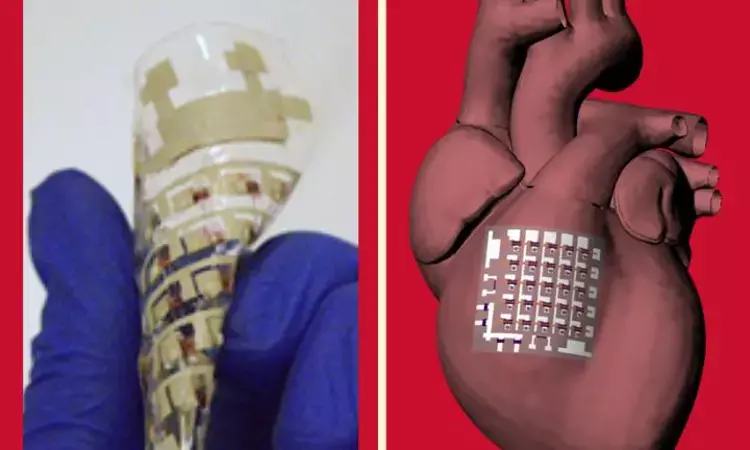- Home
- Medical news & Guidelines
- Anesthesiology
- Cardiology and CTVS
- Critical Care
- Dentistry
- Dermatology
- Diabetes and Endocrinology
- ENT
- Gastroenterology
- Medicine
- Nephrology
- Neurology
- Obstretics-Gynaecology
- Oncology
- Ophthalmology
- Orthopaedics
- Pediatrics-Neonatology
- Psychiatry
- Pulmonology
- Radiology
- Surgery
- Urology
- Laboratory Medicine
- Diet
- Nursing
- Paramedical
- Physiotherapy
- Health news
- Fact Check
- Bone Health Fact Check
- Brain Health Fact Check
- Cancer Related Fact Check
- Child Care Fact Check
- Dental and oral health fact check
- Diabetes and metabolic health fact check
- Diet and Nutrition Fact Check
- Eye and ENT Care Fact Check
- Fitness fact check
- Gut health fact check
- Heart health fact check
- Kidney health fact check
- Medical education fact check
- Men's health fact check
- Respiratory fact check
- Skin and hair care fact check
- Vaccine and Immunization fact check
- Women's health fact check
- AYUSH
- State News
- Andaman and Nicobar Islands
- Andhra Pradesh
- Arunachal Pradesh
- Assam
- Bihar
- Chandigarh
- Chattisgarh
- Dadra and Nagar Haveli
- Daman and Diu
- Delhi
- Goa
- Gujarat
- Haryana
- Himachal Pradesh
- Jammu & Kashmir
- Jharkhand
- Karnataka
- Kerala
- Ladakh
- Lakshadweep
- Madhya Pradesh
- Maharashtra
- Manipur
- Meghalaya
- Mizoram
- Nagaland
- Odisha
- Puducherry
- Punjab
- Rajasthan
- Sikkim
- Tamil Nadu
- Telangana
- Tripura
- Uttar Pradesh
- Uttrakhand
- West Bengal
- Medical Education
- Industry
Implantable device compatible to heart tissue can monitor and treat heart disease

CAPTION
Cunjiang Yu, Bill D. Cook Associate Professor of Mechanical Engineering at the University of Houston, led a group of researchers that developed a cardiac patch made from fully rubbery electronics that can be placed directly on the heart to collect electrophysiological activity, temperature, heartbeat and other indicators, all at the same time.
CREDIT
University of Houston
Pacemakers and other implantable cardiac devices used to monitor and treat arrhythmias and other heart problems have generally had one of two drawbacks - they are made with rigid materials that can't move to accommodate a beating heart, or they are made from soft materials that can collect only a limited amount of information.
Researchers led by a mechanical engineer from the University of Houston have reported in Nature Electronics a patch made from fully rubbery electronics that can be placed directly on the heart to collect electrophysiological activity, temperature, heartbeat and other indicators, all at the same time.
Cunjiang Yu, Bill D. Cook Associate Professor of Mechanical Engineering at UH and corresponding author for the paper, said the device marks the first time bioelectronics have been developed based on fully rubbery electronic materials that are compatible with heart tissue, allowing the device to solve the limitations of previous cardiac implants, which are mainly made out of rigid electronic materials.
"For people who have heart arrhythmia or a heart attack, you need to quickly identify the problem," Yu said. "This device can do that." Yu is also a principle investigator with the Texas Center for Superconductivity at UH.
In addition to the ability to simultaneously collect information from multiple locations on the heart - a characteristic known as spatiotemporal mapping - the device can harvest energy from the heart beating, allowing it to perform without an external power source. That allows it to not just track data for diagnostics and monitoring but to also offer therapeutic benefits such as electrical pacing and thermal ablation, the researchers reported.
Yu is a leader in the development of fully rubbery electronics with sensing and other biological capabilities, including for use in robotic hands, skins and other devices. The epicardial bioelectronics patch builds upon that with a material with mechanical properties that mimic cardiac tissue, allowing for a closer interface and reducing the risk that the implant could damage the heart muscle.
"Unlike bioelectronics primarily based on rigid materials with mechanical structures that are stretchable on the macroscopic level, constructing bioelectronics out of materials with moduli matching those of the biological tissues suggests a promising route towards next-generational bioelectronics and biosensors that do not have a hard-soft interface for the heart and other organs," the researchers wrote. "Our rubbery epicardial patch is capable of multiplexed ECG mapping, strain and temperature sensing, electrical pacing, thermal ablation and energy harvesting functions."
Hina Zahid Joined Medical Dialogue in 2017 with a passion to work as a Reporter. She coordinates with various national and international journals and association and covers all the stories related to Medical guidelines, Medical Journals, rare medical surgeries as well as all the updates in the medical field. Email: editorial@medicaldialogues.in. Contact no. 011-43720751
Dr Kamal Kant Kohli-MBBS, DTCD- a chest specialist with more than 30 years of practice and a flair for writing clinical articles, Dr Kamal Kant Kohli joined Medical Dialogues as a Chief Editor of Medical News. Besides writing articles, as an editor, he proofreads and verifies all the medical content published on Medical Dialogues including those coming from journals, studies,medical conferences,guidelines etc. Email: drkohli@medicaldialogues.in. Contact no. 011-43720751


